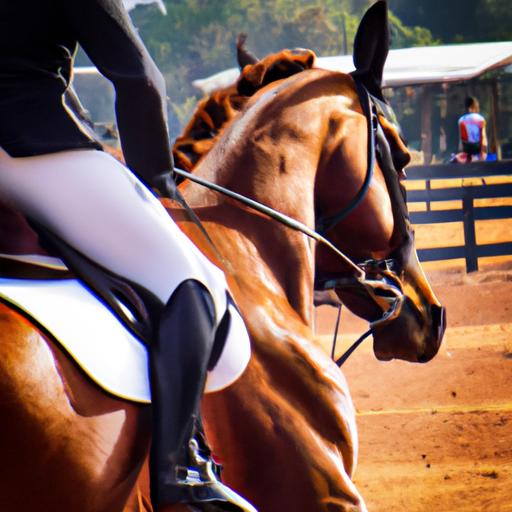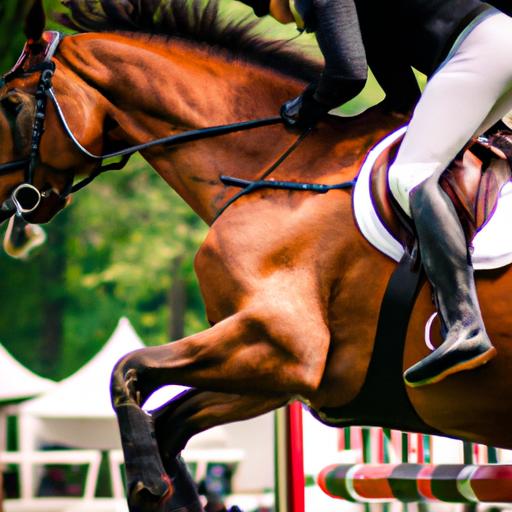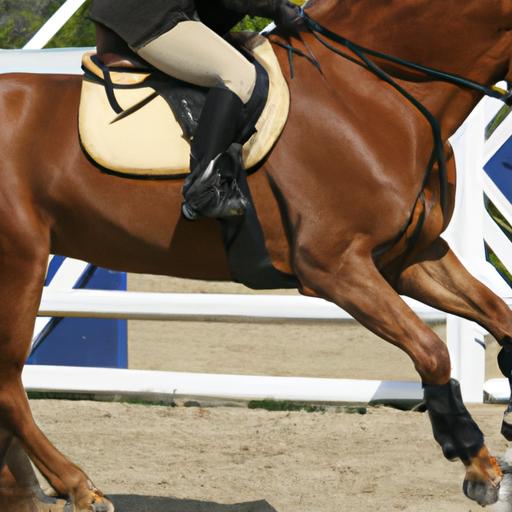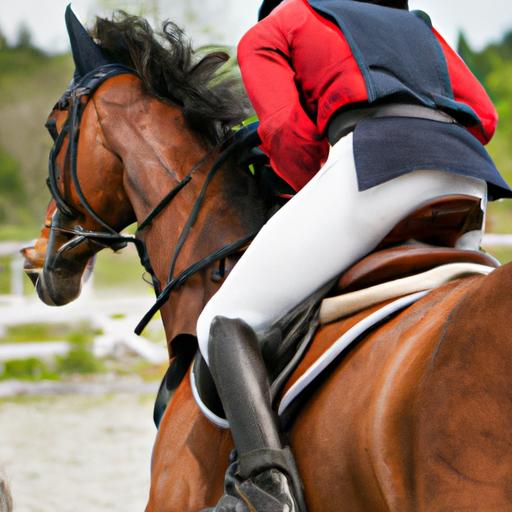Unravel the essence of equestrian sport: differentiating equine pursuits and understanding what truly makes it a captivating sport.
Introduction

They say, “Not all who ride are equestrians,” but what exactly defines the captivating world of equestrian sport? When you witness the powerful bond between horse and rider, it’s natural to wonder if every equine activity falls into the realm of competitive sport. Join me as we unravel the essence of equestrian sport and why it is crucial to differentiate it from other equine pursuits.
Definition of Equestrian Sport
Let’s start by grasping the essence of equestrian sport. Equestrian sport encompasses various competitive disciplines where horse and rider showcase their skills, precision, and athleticism. From the grace and harmony of dressage to the adrenaline-fueled excitement of show jumping and the thrill of cross-country eventing, equestrian sport offers a wide range of disciplines that test the limits of both equine and human capabilities.
Importance of Identifying Equestrian Sport
Now, you might be wondering, why is it essential to identify equestrian sport? Well, recognizing equestrian sport allows us to appreciate the dedication, hard work, and artistry that go into mastering these disciplines. It provides a platform to celebrate the achievements of athletes who dedicate their lives to honing their skills and nurturing their bond with their equine partners. Moreover, understanding equestrian sport helps us distinguish it from other equine activities, fostering a deeper appreciation for the unique challenges and accomplishments within this captivating world.
So, let’s embark on this enlightening journey together as we delve into the characteristics that set equestrian sport apart from other equine pursuits. Get ready to explore the competitive nature, technical skills, and cultural significance of equestrian sport. Stay tuned for the upcoming sections, where we will evaluate different equestrian activities and their impact on society and culture. Together, let’s unravel the enchanting tapestry of the equestrian world and discover what truly makes it a sport like no other.
Differentiating Equestrian Sport

A. Characteristics of Equestrian Sport
Equestrian sport possesses distinct qualities that set it apart from other equine activities. First and foremost, it requires a profound harmony between horse and rider. The level of connection and communication necessary for success in equestrian sport is unparalleled. The horse becomes an extension of the rider, responding to subtle cues and commands with grace and precision. This symbiotic relationship is a testament to the incredible bond that can be forged between human and equine.
Another defining characteristic of equestrian sport is the level of athleticism involved. Both horse and rider must demonstrate exceptional physical abilities, endurance, and agility. From the strength and grace displayed during dressage movements to the agility and speed required for jumping over formidable obstacles, equestrian sport demands a high level of athleticism from both participants.
B. Distinctions from Other Equine Activities
While equestrian sport shares a love for horses with other equine activities, it stands apart in its competitive nature and focus on skill mastery. Unlike recreational riding or therapeutic equine activities, equestrian sport involves rigorous training, discipline, and a drive for excellence. It goes beyond the simple enjoyment of riding and delves into the realm of athletic competition. The goal is not only to experience the joy of being with horses but also to showcase the highest levels of horsemanship and athletic prowess.
Moreover, equestrian sport holds a unique place in international sporting events. It is recognized globally and boasts a rich history of participation in major competitions, such as the Olympic Games and World Equestrian Games. The level of skill and dedication demonstrated by equestrian athletes on these global stages is awe-inspiring and solidifies the sport’s place among the most prestigious and revered athletic endeavors.
In the next section, we will delve deeper into the evaluation of various equestrian activities, exploring both the competitive nature of the sport and the significance of non-competitive equine pursuits. Prepare to witness the diverse spectrum that encompasses the equestrian world and appreciate the multifaceted nature of these captivating equine endeavors.
Evaluating Equestrian Activities

Equestrian pursuits encompass a wide range of activities, but what sets equestrian sport apart from other equine endeavors? In this section, we will explore the competitive nature, technical skills, and international recognition that make equestrian sport a distinguished discipline.
Competitive Nature of Equestrian Sport
Equestrian sport thrives on competition, where riders and their equine partners strive for excellence in their respective disciplines. Whether it’s the precision and finesse of dressage, the speed and agility of show jumping, or the endurance and bravery of cross-country eventing, equestrian sport demands dedication, perseverance, and a thirst for victory. The thrill of competing against fellow riders and the quest to achieve personal bests fuels the passion that drives equestrians to push their limits and constantly improve their skills.
Technical Skills and Training Involved
Mastering equestrian sport requires a unique blend of technical skills and a deep understanding of the equine athlete. Riders must possess impeccable balance, coordination, and finesse to communicate effectively with their horses. The art of riding involves subtle cues, precise timing, and a harmonious connection with the horse. Additionally, equestrians must undergo rigorous training to develop their physical strength, mental resilience, and horsemanship abilities. From perfecting their riding position to refining their aids and executing complex maneuvers, equestrian athletes dedicate countless hours to honing their craft.
Inclusion in International Sporting Events
Equestrian sport has earned its place on the global stage, with prestigious international events showcasing the pinnacle of horsemanship and athleticism. The Olympic Games, World Equestrian Games, and other renowned competitions bring together elite equestrian athletes from around the world. These events not only highlight the exceptional talent and dedication of riders but also serve as a testament to the universal appeal and significance of equestrian sport. The inclusion of equestrian disciplines in such prominent sporting events provides a platform for athletes to compete at the highest level and captivate audiences worldwide.
As we continue our exploration of equestrian activities, the next section will delve into non-competitive equine pursuits, providing insight into the diverse aspects of the equestrian world beyond the realm of sport. Let’s uncover the therapeutic benefits, recreational aspects, and unique experiences that await both riders and non-riders alike.
Debating Non-Competitive Equine Pursuits
As we explore the world of equestrian pursuits, it is important to acknowledge that not all equine activities fall under the umbrella of competitive sport. In this section, we will delve into the realm of non-competitive equine pursuits and the various aspects that distinguish them from equestrian sport.
A. Recreational Riding and Its Classification
Recreational riding, also known as trail riding or leisure riding, is a popular form of equine activity enjoyed by individuals of all ages and skill levels. Unlike the intense competition of equestrian sport, recreational riding focuses on the joy of spending time with horses, exploring nature, and building a harmonious connection with these majestic creatures. It offers an escape from the hustle and bustle of daily life, allowing riders to unwind and find solace in the rhythmic sway of the horse’s gait.
While recreational riding may not involve the same level of technicality and training as equestrian sport, it still requires a certain level of horsemanship and understanding of equine behavior. Riders must develop basic riding skills, learn to communicate effectively with their horse, and ensure the safety and well-being of both themselves and their equine partner.
B. Non-competitive Equine Therapy
Equine therapy, also known as hippotherapy or therapeutic horseback riding, is another non-competitive equine pursuit that focuses on the therapeutic benefits of interacting with horses. This form of therapy has been proven to be highly effective in aiding individuals with physical, emotional, and cognitive challenges. The gentle rhythmic motion of the horse can improve balance, coordination, and muscle strength, while the bond formed between the horse and the participant can instill a sense of trust, confidence, and emotional well-being.
Equine therapy is not aimed at achieving competitive goals, but rather at enhancing the quality of life and promoting physical and mental healing. It is a profound example of how horses can positively impact human lives beyond the scope of sport and competition.
C. Analysis of Non-Sporting Aspects
While equestrian sport showcases the pinnacle of human and equine athleticism, it is important to recognize that the equestrian world encompasses more than just competition. Non-competitive equine pursuits such as recreational riding and equine therapy contribute to the overall growth and appreciation of the equestrian industry. They provide opportunities for individuals to connect with horses on a personal level, fostering a deep appreciation for the beauty, grace, and therapeutic qualities these magnificent animals possess.
In the next section, we will explore the societal and cultural impact of equestrian sport, shedding light on its historical significance, economic benefits, and global popularity. So, stay tuned as we unravel the diverse facets of the equestrian world and gain a holistic understanding of its immense influence.
Societal and Cultural Impact of Equestrian Sport
Equestrian sport transcends the boundaries of competition and holds a profound impact on society and culture. Let’s explore how this captivating world has shaped history, contributed to economic growth, and garnered a global fan base.
Historical Significance and Tradition
Equestrian sport has deep historical roots that intertwine with human civilization. From ancient civilizations like Greece and Rome, where horse racing and chariot races were held, to the medieval knights who showcased their equestrian prowess in jousting tournaments, the sport has evolved over centuries while preserving its rich heritage. The traditions and customs associated with equestrian sport continue to be revered, passing down through generations and adding to its allure.
Economic Benefits and Industry Growth
Beyond its cultural significance, equestrian sport plays a pivotal role in driving economic growth. The industry encompasses various sectors, including horse breeding, training facilities, equipment manufacturing, and event management. In countries like the United States, the equestrian industry contributes billions of dollars to the economy each year, providing employment opportunities and fostering entrepreneurship. Additionally, international equestrian events attract tourists, further stimulating local economies and promoting tourism.
Global Popularity and Fan Base
Equestrian sport has garnered a devoted global fan base, captivating the hearts of millions. From the elegance and precision of dressage to the adrenaline-fueled excitement of show jumping, each discipline has its own dedicated following. Equestrian events, such as the Olympic Games and prestigious championships, draw spectators from around the world, showcasing the sport’s universal appeal. The passion and admiration for equestrian athletes and their equine partners unite people across borders, transcending language and cultural barriers.
As equestrian sport continues to grow in popularity, it not only entertains but also inspires. Its impact on society and culture extends beyond the realm of competition, influencing art, fashion, literature, and even film. The beauty of horses and the artistry of equestrian sport have become a source of inspiration for artists and creators, leaving an indelible mark on our collective imagination.
In conclusion, the societal and cultural impact of equestrian sport is undeniable. Its historical significance, economic contributions, and global popularity make it a powerful force that resonates with people worldwide. As we celebrate the achievements of equestrian athletes and cherish the bond between horse and rider, let us recognize and appreciate the profound impact that equestrian sport has on our society and culture.


